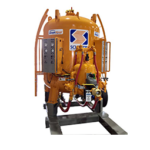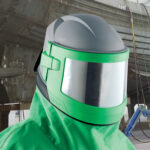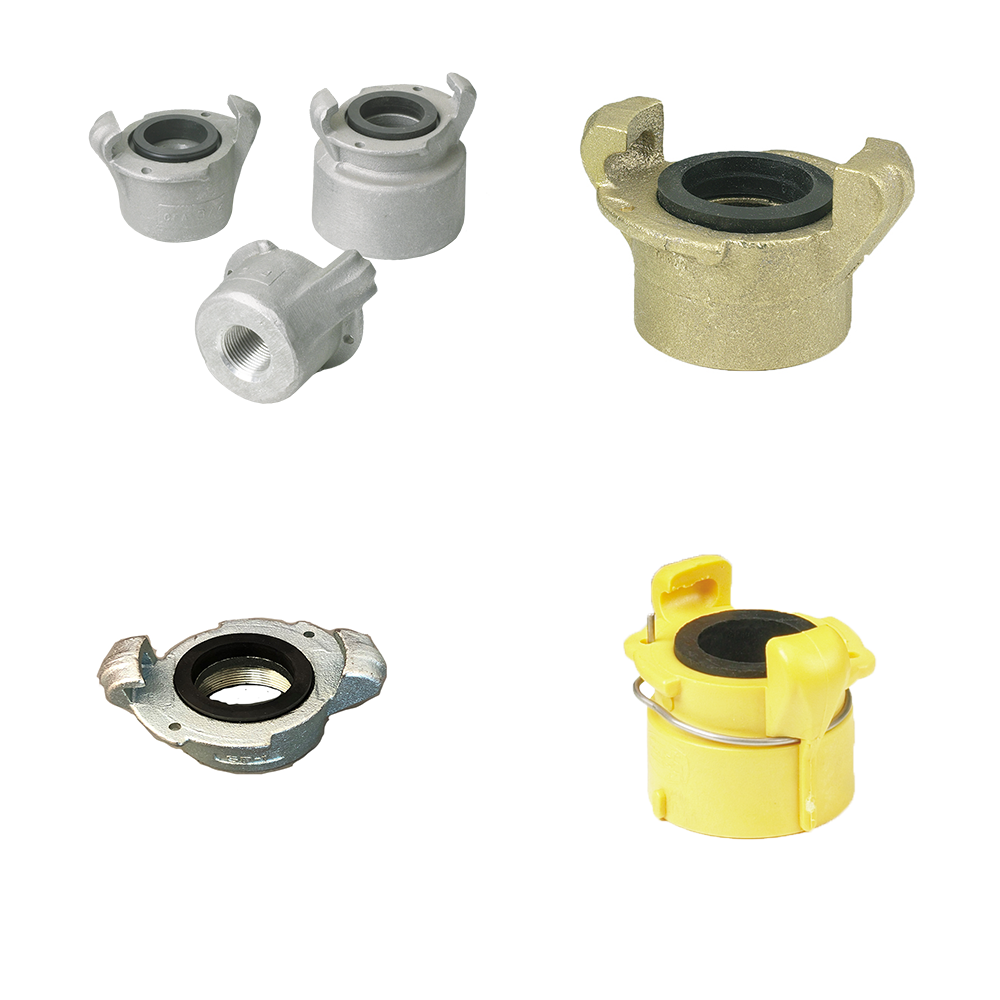PROPER BLASTING SETUP
AIR COMPRESSOR
The first thing you’re going to have in any blasting setup is your compressor. It will always have startup procedure instructions on the inside of the door. Start the unit, let it warm up, and then turn the air to the run cycle… and then high or low.
Next, find your air outlet there’s always a ball valve that connects to your bull hose and from there you always need to have safety restraints, called whip checks, and pins in your couplings. This is crucial to any blasting setup. Safety first!
AIR PREP
If you follow the bull hose you will work your way to an air prep. Air preps help draw the moisture out of the moist hot air created by the air compressor. For productivity sake you always want to blast with cool, dry air. Again inlet and outlet ball valves are crucial for safety and to control air flow, as well as the needed safety whip check from the outlet valve to the bull hose leading to the blast pot.
BLAST POT
The bull hose going into the blast pot again needs to have whip checks for safety issues. When you open up the pressure to the pot, using the inlet ball valve, you always want to make sure you have the dump valve closed. This allows the pot to pressurize and ready itself to blast.
This particular example involves an electric setup, so we use alligator clips and battery leads to supply the electric solenoid. From there our dead man lines hook up and go all the way to the blast nozzle. We recommend Axxiom Schmidt metering valves. In this particular set-up we have a Schmidt Thompson Valve 2, with a two inch base for high flow. The blast hose is connected at the outlet metering valve with blast couplings, safety pins, and whip checks. Control lines then run parallel with the blast hose to the deadman trigger.
PRESSURE
There are a lot of tools that people use in the field to tell if their blasting pressure is proper. One is a needle pressure gauge. You simply inject the needle into the hose facing with the abrasive stream, and that will give you a live psi test during blasting.
BREATHING AIR
From the compressor, a Chicago-line, attached with safety pins and whip check, runs into RPB GX4 and radex filter – also secured by pins and whip check. What this filter does is cleans any oils or contaminants that may have passed through the compressor air that would be going to the blaster’s helmet. The monitor is supplied by battery clips, 12 volt or 120. Turn on the monitor and the monitor will give you a reading. Anything under 10 ppm CO is good for you.
The breathing airline then goes to our NOVA3 blast helmet. Between the airline and helmet hose we have a C40 climate control regulator. This allows you to have either cold or hot air into the helmet and a dial which regulates how much air goes into the helmet. The air enters through the back side of the helmet so that you never fog up. There’s an outside cape to keep the abrasive off and an inside cape for comfort and pads inside the helmet like a motorcycle helmet. The NOVA3 actually turns with your head.
Blast gloves are mandatory. Coveralls keep you safe and clean.
 My Account
My Account









